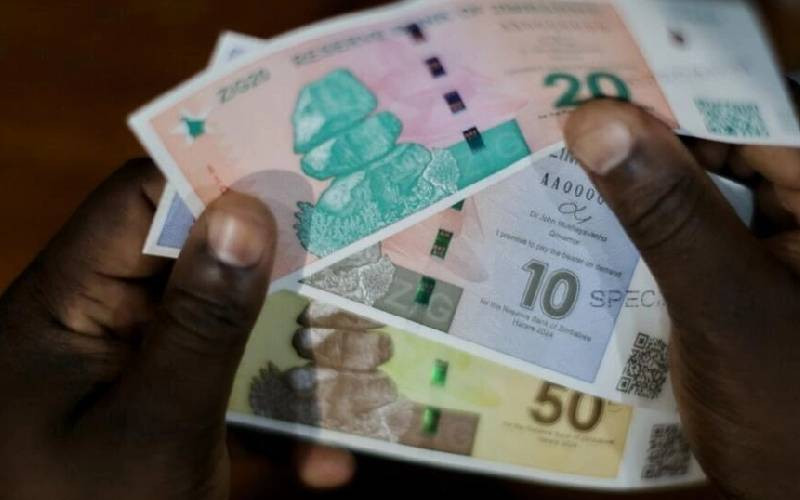China took another step to degrade the dollar in defining the value of its currency, in an effort that cuts against its rival’s stubbornly strong hold on the global financial system.
An arm of the People’s Bank of China, which last year started setting the yuan against a basket of currencies, on Thursday said it’s adding 11 units to that reference group. The move lowers the dollar’s weighting by 4 percentage points, to 22.4 per cent -- little more than twice the share for South Korea’s won, a new entrant.
While the logic of determining the yuan’s value against the currencies of its trading partners is clear, the problem is that the dollar is still the dominant reference in the perception of the public and the market. The US currency is on one side of 88 per cent of all foreign-exchange trading.
“The dollar-yuan rate will still be the benchmark that determines sentiment,” said Hao Hong, chief strategist in Hong Kong at Bank of Communications International Holdings Co., a subsidiary of China’s No. 5 lender by market value. “The basket is just a reference, so the change in the index’s composition and the efforts of keeping it stable will do little to boost confidence.”
The yuan’s retreat against the CFETS RMB Index, the basket set by the China Foreign Exchange Trade System, has been more moderate this year than against the dollar, as the currencies of China’s trading partners have also declined. In recent weeks it’s even advanced.
That offers an image of stability that would appeal to a Communist leadership that’s striving to maintain economic growth in excess of 6.5 percent and reduce leverage, all while heading off any exodus of domestic capital. The challenge is that China’s swelling middle class, along with its ultra-wealthy, are looking to diversify some of their increasing pool of savings overseas. Prospects for higher U.S. interest rates only increase the allure of the dollar.
Simply adding currencies such as the won, South Africa’s rand, the dirham of the United Arab Emirates, Saudi Arabia’s riyal, Hungary’s forint, Poland’s zloty and Turkey’s lira won’t be sufficient to change the public’s view, according to a panoply of analysts from institutions including Royal Bank of Scotland Group Plc, Bank of Communications and ICBC International Research Ltd.
The background to this week’s announcement: an accelerating outflow of funds that’s seen China’s foreign-exchange reserves slide, the PBOC’s yuan positions drop last month by the most since January. The central bank said on Friday it tightened requirements for lenders to report cross-border transactions by customers as part of efforts to curb money laundering. China will require financial institutions to report any cross-border transfers of 200,000 yuan ($28,800) or more starting July 1.
“The yuan will continue to depreciate against the greenback and the pressure of capital outflow will likely persist in 2017,” said Hong, who estimates a “fair” rate would be 7.5 per dollar, against 6.9468 in afternoon trading Friday.
“Adding a batch of emerging-market currencies into the basket will likely increase two-way volatility of the yuan’s fixing and the exchange rate,” said Ken Cheung, Hong Kong-based Asia currency strategist at Mizuho Bank Ltd. “If the dollar extends its rally next year, particularly against the emerging-market currencies under Donald Trump’s presidency, the onshore and offshore yuan will come under heavier pressures.”
 The Standard Group Plc is a
multi-media organization with investments in media platforms spanning newspaper
print operations, television, radio broadcasting, digital and online services. The
Standard Group is recognized as a leading multi-media house in Kenya with a key
influence in matters of national and international interest.
The Standard Group Plc is a
multi-media organization with investments in media platforms spanning newspaper
print operations, television, radio broadcasting, digital and online services. The
Standard Group is recognized as a leading multi-media house in Kenya with a key
influence in matters of national and international interest.
 The Standard Group Plc is a
multi-media organization with investments in media platforms spanning newspaper
print operations, television, radio broadcasting, digital and online services. The
Standard Group is recognized as a leading multi-media house in Kenya with a key
influence in matters of national and international interest.
The Standard Group Plc is a
multi-media organization with investments in media platforms spanning newspaper
print operations, television, radio broadcasting, digital and online services. The
Standard Group is recognized as a leading multi-media house in Kenya with a key
influence in matters of national and international interest.









